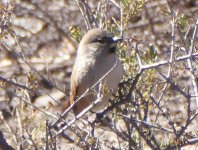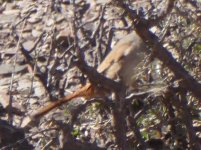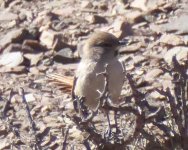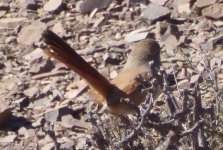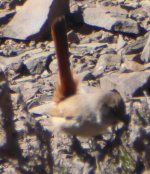This is a Canastero I saw in June at Los Cardones NP at 3050 meters above sea level. To me it looks like Steinbach's Canastero Pseudasthenes steinbachi. However it seems that this species is easy to confuse with Rusty-vented Canastero Asthenes dorbignyi. What seems to me to be the most reliable and objective field mark to distinguish them is the tail colour: dorbignyi being mostly black whereas steinbachi is mostly rufous, as in the photos here. A local birder I spoke with said this was probably too high for steinbachi, and the Ridgely and Tudor book seems to agree. Whatever this bird is, I saw quite a few more of almost certainly the same species at Los Cardones. They made a distinctive nasal burry call which is neither on xeno-canto or on Birds of the Southern Cone, rather reminiscent of a brief call of a Common Whitethroat (like XC181534, but shorter and less emphasized). I realize that not many people are going to be familiar with these species, but any ideas on the matter are welcome.
-
Welcome to BirdForum, the internet's largest birding community with thousands of members from all over the world. The forums are dedicated to wild birds, birding, binoculars and equipment and all that goes with it.
Please register for an account to take part in the discussions in the forum, post your pictures in the gallery and more.
Canastero in NW Argentina (1 Viewer)
- Thread starter Tui
- Start date




